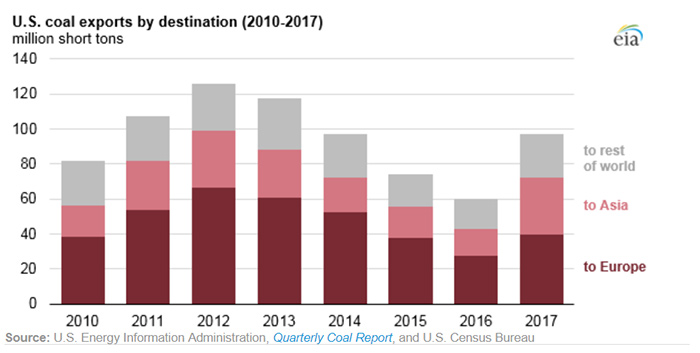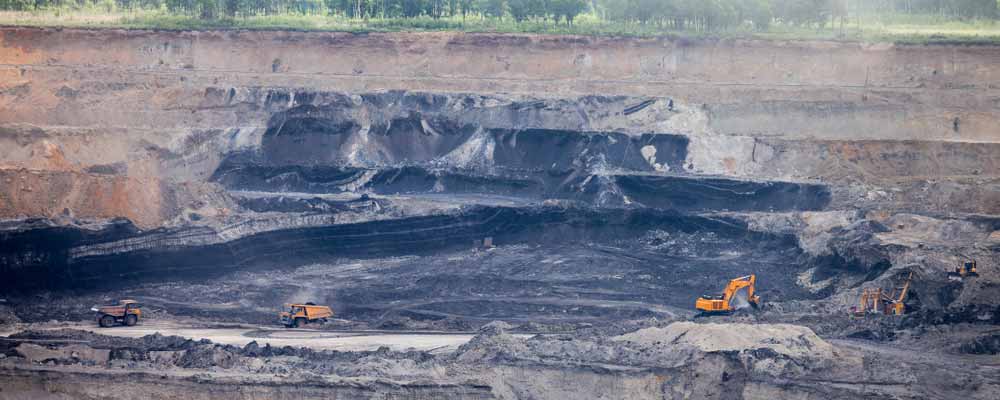U.S. coal use declined for the eighth year in a row. American electric producers are switching to cleaner sources like natural gas and renewables. That doesn’t mean American coal producers are suffering though.
American coal is finding new homes abroad. After years of falling exports, 2017 marked a dramatic shift.
Take a look at the chart below showing annual coal exports:

Coal exports grew by 61% last year, according to the Energy Information Administration (EIA). The fastest-growing consumer is Asia — specifically India.
China is getting on board with cleaner energy like natural gas. But Indian electric producers are still reliant on coal. Coal supplies half of its grid with power.
India may be rich in coal reserves, but this supply is mostly low quality. Newer power plants need high-quality coal, which America has plenty of.
The EIA estimates that America has nearly 350 years of coal reserves.
Other sources of demand include Japan and Europe. The tsunami that devastated Japan in 2011 disrupted clean energy plans. The nuclear accident slowed the nation’s nuclear energy program.
European power is shifting away from coal, but metal production still used over half of U.S. exported coal.
The trends in international coal are unlikely to change in the short term. Despite a push from developed nations to switch away from coal, its role as an energy source won’t disappear anytime soon.
Some major miners, such as Rio Tinto and BHP, are backing away from coal to have a cleaner reputation. But cutbacks in coal production are helping to limit the supply. This drives profits higher for the remaining players.
Tightening supplies and steady demand are creating a tailwind for domestic coal producers. Consider that Peabody Energy Corp. (NYSE: BTU), one of the largest domestic coal producers, saw its share price climb 36% in the past six months.
Regards,

Anthony Planas
Internal Analyst, Banyan Hill Publishing









